Key takeaways:
- Butterflies play a crucial role in ecosystems as pollinators, highlighting the importance of creating butterfly-friendly habitats through native plant cultivation and reduced chemical use.
- Reducing garden waste through composting and repurposing materials enhances soil quality, supports biodiversity, and encourages butterfly populations.
- Choosing native plants is essential for attracting butterflies, as these plants provide the necessary habitat and nourishment for their life cycles.
- Engaging in community efforts, such as plant exchanges, fosters sustainability and strengthens connections while promoting waste reduction.
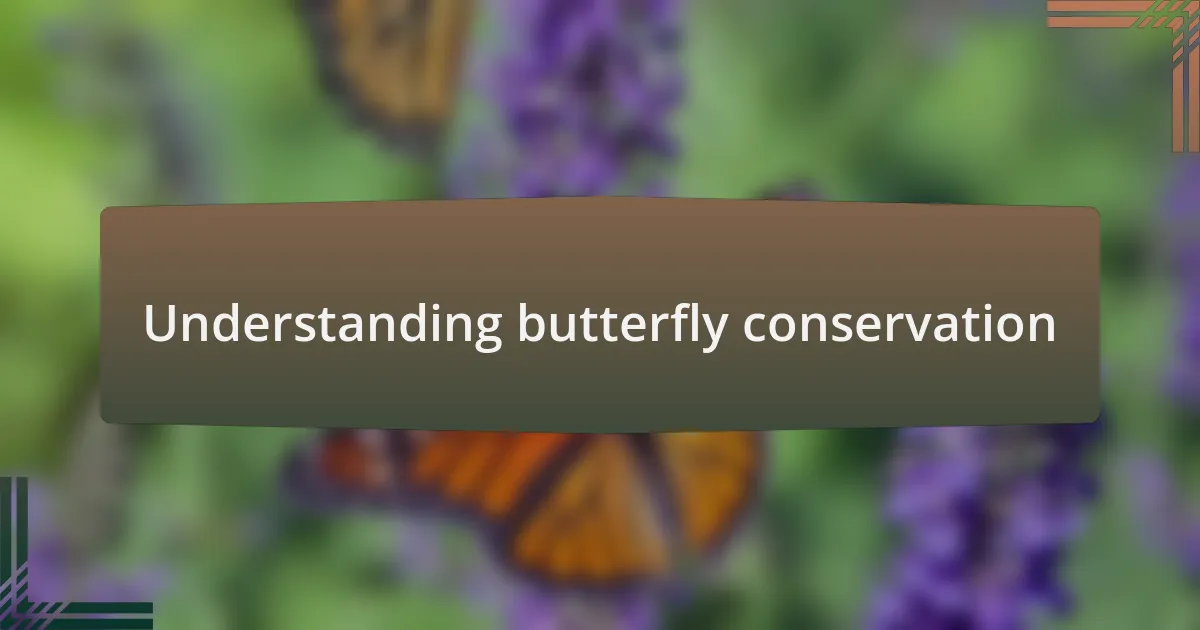
Understanding butterfly conservation
Butterfly conservation is about more than just protecting a species; it’s about fostering a thriving ecosystem. I remember the first time I saw a butterfly flitting among the flowers in my garden; it felt like a reminder of nature’s vibrancy. Have you ever stopped to consider how a single butterfly can symbolize the health of an entire environment?
To understand butterfly conservation, we must recognize the crucial role these creatures play as pollinators. They’re not just beautiful; they help plants reproduce by transferring pollen from one flower to another. Reflecting on my own garden, it became clear just how vital these insects are when I noticed how many more flowers bloomed after I started creating butterfly-friendly habitats.
Moreover, the threats butterflies face—from habitat loss to climate change—are urgent issues we cannot ignore. On days when I spot fewer butterflies, I feel a pang of sadness, a reminder of the delicate balance of nature. What can we do in our gardens to support them? Simple actions like planting native flowers and reducing chemical use can make a profound difference. Every little effort counts in this conservation journey.
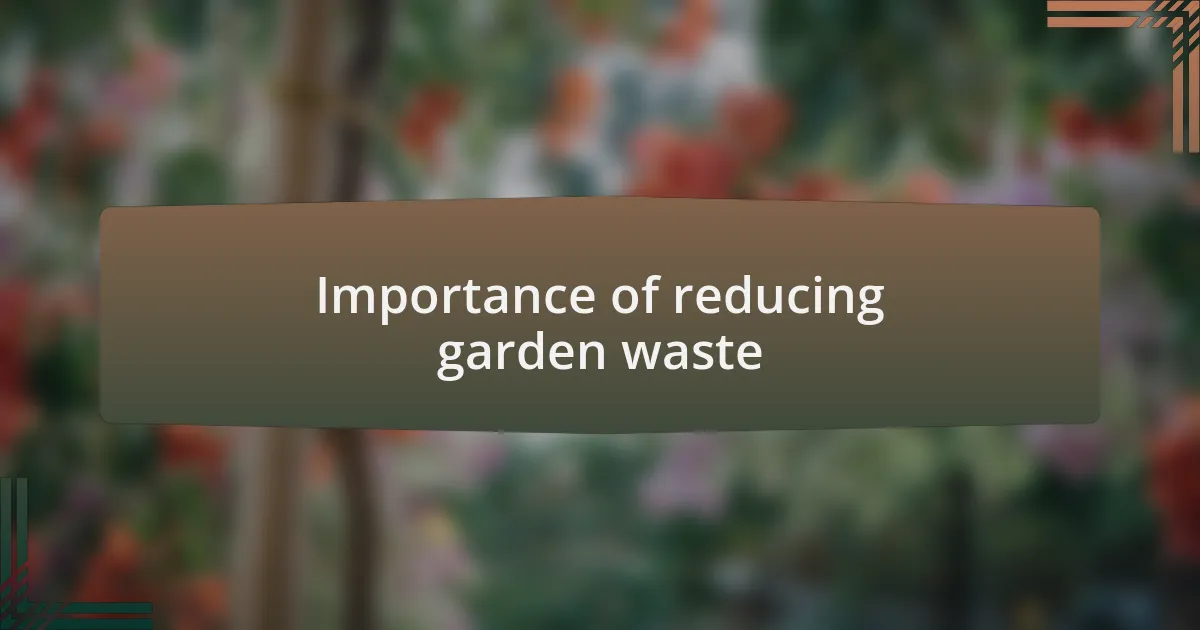
Importance of reducing garden waste
Reducing garden waste is essential for creating a healthier environment, both for butterflies and the broader ecosystem. I recall a summer when I noticed my compost pile thriving with life—worms, beetles, and even the occasional butterfly! This vibrant activity was a clear sign that reducing waste benefits not only the soil but also fosters a habitat brimming with biodiversity.
When we compost or repurpose garden trimmings instead of sending them to the landfill, we significantly cut down on greenhouse gas emissions. I often think about how every discarded plant fragment could have nourished my garden instead. Isn’t it fascinating how we can turn what seems like trash into treasure, enhancing the soil’s quality and inviting more butterflies to visit?
Engaging in waste reduction also cultivates a more mindful gardening approach. I’ve started to pay attention to what I buy, opting for perennial plants that require less maintenance and waste. This shift has not only minimized waste but has also allowed me to feel more connected to the cycles of nature. Why wouldn’t we want to create a space that both nurtures wildlife and reduces our environmental impact?

Benefits for butterfly habitats
Creating a butterfly-friendly habitat begins with understanding the role of waste reduction in promoting a thriving ecosystem. When I turned my old leaves and grass clippings into mulch, I noticed that my garden floor became a warm sanctuary for butterflies and their larvae. Isn’t it remarkable how something so simple can support the life cycle of these beautiful creatures?
By composting, I not only enriched the soil but also attracted more butterfly species to my garden. I remember feeling a sense of joy watching swallowtail butterflies flitting about, drawn to the native plants thriving thanks to the nutrient-rich compost. This connection to nature is something anyone can cultivate through waste reduction practices.
Moreover, reducing waste in the garden contributes to healthier butterflies by minimizing harmful chemicals. In my experience, when I stopped using synthetic fertilizers and embraced organic methods, I witnessed a resurgence in butterfly populations. Have you ever thought about how your gardening choices ripple through the ecosystem? Each decision we make can enhance the habitat for these delicate pollinators.
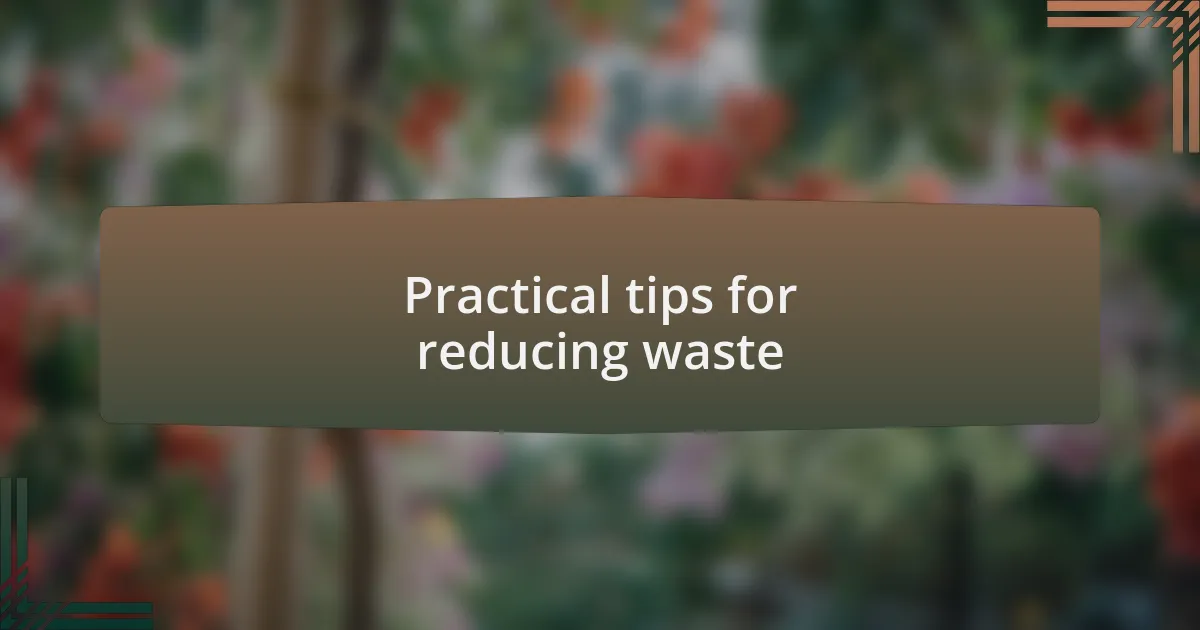
Practical tips for reducing waste
One practical tip for reducing waste in the garden is to embrace plant diversity. I enthusiastically transformed sections of my garden into wildflower patches. This not only filled my space with vibrant colors but also attracted various butterfly species. Have you considered how diverse plants can contribute to a richer ecosystem? Each bloom provides nectar, making your garden a buzzing haven for butterflying activity.
Another method I found effective was using repurposed materials for plant supports and garden decor. I’ve occasionally turned old wooden pallets into vertical gardens. This not only cut down on waste but also created a charming feature in my backyard, all while providing more places for butterflies to rest. It’s incredible how creativity can change our waste into something beautiful.
Lastly, I’ve made it a habit to practice mindful purchasing. By selecting native plants that thrive in my local environment, I’ve reduced the need for excess watering and maintenance. This practice not only minimizes waste but also helps nurture the butterflies that are adapted to these plants. Have you thought about how your choices at the nursery affect the long-term health of your garden? Perhaps it’s time to reflect on the plants you choose and their impact on your eco-friendly journey.
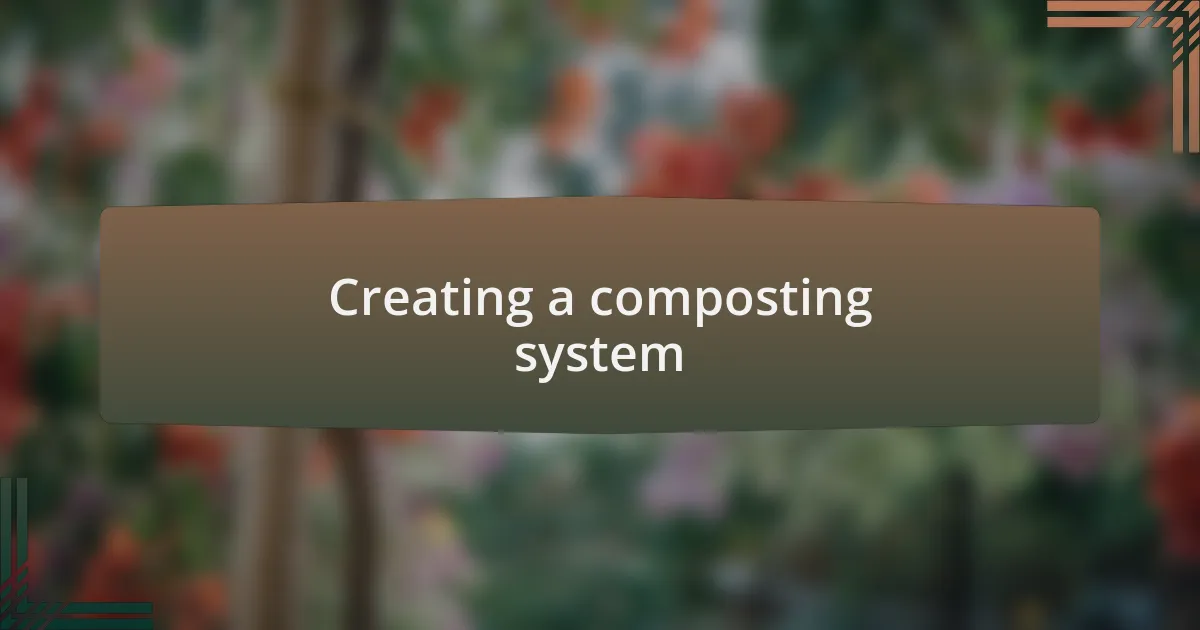
Creating a composting system
Creating a composting system has been one of the most rewarding initiatives I’ve undertaken in my garden. I started with a simple bin made from reclaimed wood, making it both eco-friendly and rustic. Watching kitchen scraps transform into nutrient-rich compost feels like a miracle, doesn’t it? Each time I turn the pile, I see not only waste being reduced but also the earth revitalizing itself.
I remember my first experience of composting—the pungent aroma of kitchen scraps mingling with dried leaves. At first, it was overwhelming. But as I learned to balance the greens (like vegetable peels) with browns (such as dried twigs), the process became easier. Have you ever witnessed the magic of worms at work? These little creatures make composting even more fascinating as they break down materials into black gold for my garden.
Over time, I discovered that adding things like coffee grounds and eggshells enhanced my compost’s effectiveness. These small adjustments have led to vibrant plants and a flourishing butterfly habitat. What’s uniquely gratifying is knowing that I’m recycling my waste while giving back to the soil. Isn’t it heartening to cultivate a system that not only supports your garden but also aligns with the beautiful cycle of nature?

Choosing native plants for butterflies
Choosing native plants is crucial for attracting butterflies to my garden. I remember my first attempt at selecting natives; it was a joyful mix of research and discovery. As I unearthed the benefits of local flora, I realized that these plants not only thrived in my soil but also provided the essential nectar and habitat that butterflies crave. Have you ever experienced the thrill of seeing a delicate Monarch flutter by, drawn to a milkweed you nurtured?
One of my favorite native plants is the coneflower. The moment it blooms, I’m reminded of how energy-efficient these beauties are, supporting local ecosystems without the need for heavy maintenance or chemicals. Watching butterflies feast on their vibrant petals brings me immense happiness—almost like welcoming friends into my garden. It’s fascinating how just a few blooms can create a lively atmosphere, isn’t it?
I often think about the impact of my choices when I see more varieties of butterflies visiting. Each butterfly has a specific plant that its life cycle relies on, which means selecting the right natives isn’t just beneficial; it’s essential. I still feel a rush of pride each time I spot a caterpillar munching away, transforming into something as brilliant as the butterflies they will become. What could be more fulfilling than knowing my garden is playing a part in nature’s intricate dance?
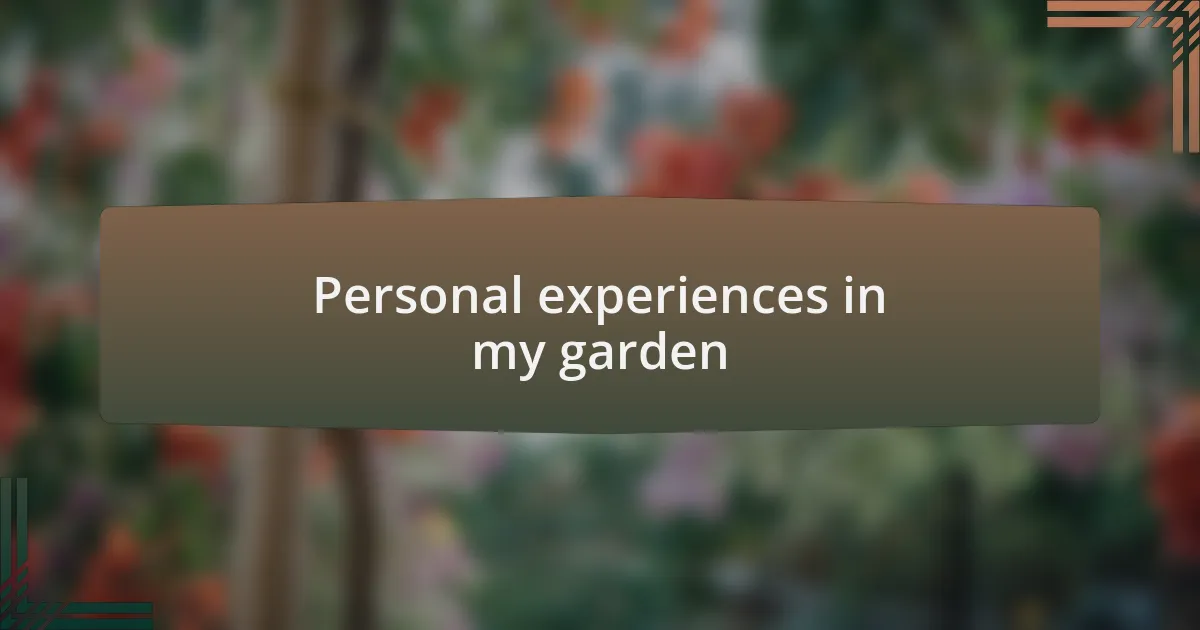
Personal experiences in my garden
As I delved deeper into reducing waste in my garden, I began composting kitchen scraps. I vividly recall the moment I first saw my kitchen waste transform into rich, dark soil. It felt like magic—watching scraps that would have contributed to landfill turn into nourishment for my plants, and it added a sense of purpose to what once felt like a chore. Have you ever felt the satisfaction of creating something valuable from something deemed useless?
Another practical step I took was repurposing old containers for planting. I stumbled upon some forgotten ceramic pots hidden in the garage, and rather than tossing them away, I turned them into beautiful plant holders. The joy of discovering a second life for these items was incredible, and each pot now tells a story—a conversation starter about sustainability in my garden. Has anything ever sparked your creativity in an unexpected way?
I can’t forget the time I initiated a neighborly plant exchange, inviting friends to bring their excess seedlings. Watching my garden grow with a variety of plants that I didn’t have to buy was exhilarating. It strengthened our community ties and reiterated that waste reduction doesn’t have to be a solo endeavor. Witnessing my friends’ excitement when they found homes for their extras made me realize that sometimes, the best solutions come from simply sharing what we have. Isn’t it beautiful how community can foster sustainability?